#f14atomcat
Photo

Whats on your bench?? @red_fox_studio_official @ammomig #scaleaircraft #scalemodel #modelkit #tamiya #trumpetermodels #48scale #32scale #f14btomcat #f14tomcat #f14atomcat #redfoxstudiocockpit #ammoredfox #ammomigjimenez (at Ely, Cambridgeshire, United Kingdom) https://www.instagram.com/p/CisDmjmj1Hm/?igshid=NGJjMDIxMWI=
#scaleaircraft#scalemodel#modelkit#tamiya#trumpetermodels#48scale#32scale#f14btomcat#f14tomcat#f14atomcat#redfoxstudiocockpit#ammoredfox#ammomigjimenez
2 notes
·
View notes
Photo

Available #hasegawa #f14atomcat #f14tomcat #topgun #topgunmaverick #builtaircraft #topgunmovie #scaleaircraft #172aircraft #aircraftmodel #planemodel #airplanemodel #closecombat #aircraft #plasticaircraft #plasticplane #Plasticmodel #builtmodel #scalemodel #scalemodelkit #modelkits #modelkit #plastickit #artwork #militarymodels #militarymodel #scalemodeling #militarymodelkit #ProBuiltModel #TopRatedSeller Available for sale at www.probuiltmodels.com https://www.instagram.com/p/CXaT8QJB_-L/?utm_medium=tumblr
#hasegawa#f14atomcat#f14tomcat#topgun#topgunmaverick#builtaircraft#topgunmovie#scaleaircraft#172aircraft#aircraftmodel#planemodel#airplanemodel#closecombat#aircraft#plasticaircraft#plasticplane#plasticmodel#builtmodel#scalemodel#scalemodelkit#modelkits#modelkit#plastickit#artwork#militarymodels#militarymodel#scalemodeling#militarymodelkit#probuiltmodel#topratedseller
2 notes
·
View notes
Text
Iran - Iraq air war’s best aircraft
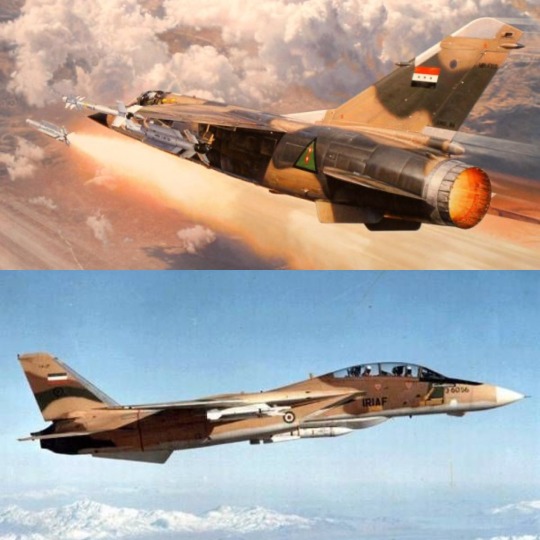
Iran’s F-14A Tomcat Vs Iraq’s Mirage F.1EQ
The Iran Iraq conflict in the air was a dangerous battlefield, and an interesting clash of different ideas on how air combat should be fought as Iranian and Iraqi aircrew were trained in very different ways but also a interesting clash of Soviet against American made aircraft and weapons. During the war one aircraft from each side stood out as the top tier fighters of their respective air forces which were:
the US-made Grumman F-14A Tomcat used by the IRIAF

By far the most powerful aircraft on the battlefield, the Tomcat was an advanced 4th generation fighter aircraft with an astonishing AN/AWG-9 weapon control system, powerful avionics and equipped with some superb weapons, most notably the Aim-54 long range missiles, and yet possess incredible manoeuvrability thanks to lessons learned from Vietnam despite its incredible size compared to other aircraft of the time. One of the most important reasons the Tomcats were so effective were the aircrews who had been trained in the US to top western standards, giving the pilots fantastic understanding of how to fight and react in the heat of combat and would go a long way when facing a enemy of much greater numbers. 80 aircraft had been ordered in 1974 and the first aircraft would be delivered in 1976 with a total of 79 aircraft in country by the time the revolution ended the contract. Apart from some small downgrades to a few of the avionics and the Phoenix missiles the aircraft were the most powerful fighters in the region at the time and remained effective even during the 80s.
The downsides to the IRIAF Tomcats were small numbers available at the start of the conflict (60 in 1981) and the numbers went down to about 20 aircraft due to combat losses and lack of available spares. The Tomcat was a highly sophisticated aircraft and needed complex parts and highly trained technicians to maintain, both were not really available to a cut-off Iran who had to rely on self-knowledge and the black market for parts. Also the US had kept the Iranians from understanding how the complicated avionics worked so when the US left, the Iranians had a hard time knowing how these parts could be fixed, only some time did they know how to fix these parts. And finally these Tomcats, being original A models were fitted with the troublesome Pratt & Witney TF30 engines and although they were the improved 414 model they still proved problematic, none other than 9 aircraft would be lost due to engine related issues, and each loss was painful as of course no replacement aircraft could be procured.
And on the Iraqi side there was the French-made Dassault Mirage F.1EQ-2
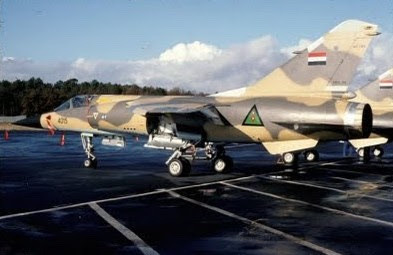
First ordered in 1977 and starting to arrive in Iraq in 1981 the Mirage F.1 was a big step up from the line of Soviet built aircraft used by the IrAF. Unlike the Soviet MiG 21 and 23 which were downgraded from Russian standards and were rather poorly equipped, the F.1 was very modern, brilliantly equipped and the aircraft could use a whole host of modern state of the art weapons and reconnaissance pods although for this comparison I���m focusing on the F.1EQ-2 interceptor variant. The EQ.2 used the Standard Thompson-CSF Cyrano IV Radar, a system capable of using three different modes and was compatible with what was arguably some of the best air-to-air weapons available such as the Mantra R550 Magic and the Super 530 missiles. The simple systems and the single engine made for a lightweight and easy aircraft to maintain and fly, and unlike the Iranians who were cut off, the Iraqis could acquire as many as it could afford and almost 100 were in the country by 1988/89. The aircraft certainly made its mark and gave the timid IrAF pilots a new level of confidence when facing more advanced Iranian aircraft.
The downsides to this aircraft were mainly the lack of availability, most of the fighting during the war was done with the older and far less capable MiGs and Sukhois already in inventory as delays in the development and production, meaning the F.1s would be slow to arrive and not in any substantial numbers until later on. Also Iraqi requests for a heavier payload capacity slowed down the deliveries of the aircraft. Also a big issue was Pilot training, unlike the Iranians who had been trained to high standards by the Americans, the Iraqis had been trained to rather sub-standard soviet doctrine built around the idea of a IADS system, but the pilots received very little air-combat training, and often had to learn its own methods or those of its Arab neighbours. Along with the new F.1s the French also trained the Pilots to much better standard, there were even air-combat courses made available by Dassult in France and a number of Iraqi pilots took these to acquire much needed skills and although some of these became brilliant pilots, they were too few in number and Iranian aircrews would always have an edge in terms of pilot capabilities compared to average Iraqi drivers.

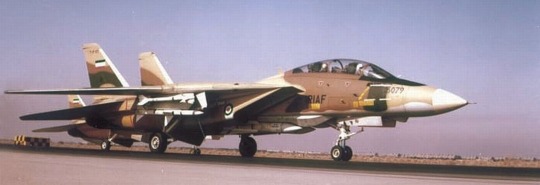
Overall the F-14As shot down an estimated 30 F.1EQs compared to about 6 Tomcats downed by the Mirages (the F-14s would end the war with a tally of 160-20 and the F.1EQs with 35-30). In my opinion the F-14A was the better aircraft in a number of ways. The main one being the Tomcat’s strongest trait: it’s AWG-9 weapon control system which possessed far greater range than the simple Thompson-CSF system in the F.1 and the AWG-9 was largely immune to jamming, even by some of the more powerful systems employed by the Soviets and Iraqis. With this the Tomcats could control the battlefield, choosing when to engage and the Tomcat could engage long before the Mirage thanks to its main weapon: the Aim-54A Phoenix with its long range capabilities could knock out Iraqi aircraft before they could even come close to weapon range themselves.
If the fighting got into visual range and into a true dogfight a number of factors would come into play, the F-14A posses fantastic low-speed agility especially at lower altitudes, but a Tomcat crew would have to be very careful of the notorious compressor stall issue with the TF30s but also the Mirage F.1s are a much smaller aircraft and use a single engine which is a good trait in combat but also have no worry about the stall issue. Pilot skill would play a big part here and the F-14s crew were still better in skill but F.1 pilots were better trained than previous MiG pilots so it would even the score and finally at this sort of range some good weapons are needed. The Mantra R530F Super was a far superior medium range missile to the older Aim-7E-4 Sparrow which hadn’t changed much since the 70s and for close range work both the Aim-9P and the Mantra 550 Magic Mk1/2 were relatively even in terms of capabilities.
Both air forces used different tactics to employ their aircraft effectively, the Iranians typically used the US combat spread technique and often engaged first with the large Phoenix missile and long range at about 50 miles and the poorly equipped Iraqi aircraft would often be shot down before they knew what hit them and fled the first chance they got. The Iraqis developed a combat method known as “Giraffing” in which aircraft would approach at very low level then climb under the Tomcats to pounce them from an unexpected angle and this resulted in a number of Tomcats shot down, 4 were shot down in a few days in November 1981 which gave a boost the the Iraqi pilots to take of the seemingly invincible F-14s.
And yet despite this the Iranian Tomcats remained the dominant fighter of the war, a combination of a fantastic aircraft and brilliantly trained aircrew put them ahead of the Iraqis even with the advanced F.1s, only the lack of aircraft and parts prevented them from ever fully establishing air superiority over the hostile skies of the conflict. The tomcats ended the war a clear winner but were low in numbers when the conflict ended whilst the Iraqi F.1s would earn a reputation as a effective multi-role aircraft, being used in the air interception role, ground attack role and anti-shipping role.
Today the IRIAF Tomcats soldier on, with an estimated 20-40 aircraft still in service
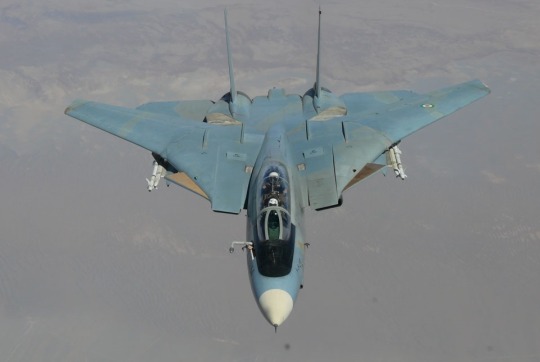
Whilst unfortunately the 1991 Gulf war and the 2003 invasion of Iraq led to the complete end to the IrAF with most of its Mirage F.1EQs destroyed or grounded due to lack of parts

Ironically a number of Iraqi F.1EQs fled to Iran before the start of the 1991 Gulf war and these were seized by the Iranians as compensation for the conflict they started. These still fly with the IRIAF alongside the very F-14s they once challenged.

#grumman f 14 tomcat#f14tomcat#f14atomcat#f14#f14a#grumman#dassault mirage f1#mirage f1#f1eq#fighter jet#fighter aircraft#air combat#aircraft comparison#iran#islamic republic of iran air force#iriaf#iraq#iraqi air force#iraf
58 notes
·
View notes
Photo
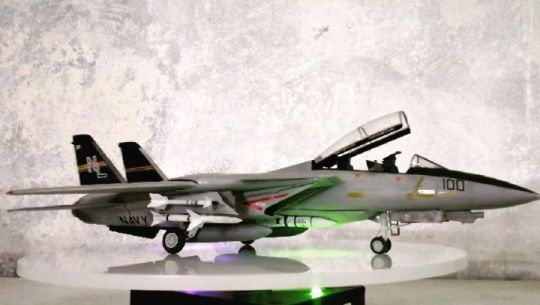
F14 Tomcat VF-51 Interceptor #72scale #72scalemodel #rafprohobbies #f14atomcat #vf51 #interceptor #f14tomcat #modelkit #mokit #indonesianmodeler #scalemodeler #scalemodel #scalemodelenthusiast (at DKI Jakarta) https://www.instagram.com/p/CWqC9CNh9lB/?utm_medium=tumblr
#72scale#72scalemodel#rafprohobbies#f14atomcat#vf51#interceptor#f14tomcat#modelkit#mokit#indonesianmodeler#scalemodeler#scalemodel#scalemodelenthusiast
0 notes
Photo

Ya contamos con la nueva entrega de la colección "Aviones de Combate", la cual ya pueden ser tuya con su respectivo descuento sobre el precio de portada. Producto en venta exclusivamente en nuestra red social Facebook y sujeto a disponibilidad. #distribuidoraejeo #salvat #vuelo #volar #avionesdecombate #aviones #combate #plane #combat #14 #entrega14 #fascículo14 #entregacatorce #fascículocatorce #f14atomcat #f14a #tomcat https://www.instagram.com/p/B0ye05fA17X/?igshid=1jrhukwrx6bb4
#distribuidoraejeo#salvat#vuelo#volar#avionesdecombate#aviones#combate#plane#combat#14#entrega14#fascículo14#entregacatorce#fascículocatorce#f14atomcat#f14a#tomcat
0 notes
Video
🤘 😂 . . . . 📸 Unknown . . Repost @jet_plane_power #iaf_in_ia #military #army #f14 #f14atomcat #pictureoftheday #tbt #f14b #f14tomcat #f14_tomcat #f14supertomcat #f14tomcatlover #f16 #f15 #f18 #f22 #f35 #f16fightingfalcon #f22raptor #f15eagle #su27 #su30 #su57 #sukhoi #plane #planes #army #military #photooftheday (at India) https://www.instagram.com/p/CAzNv8JA4J0/?igshid=mw5ysm0wnkdm
#iaf_in_ia#military#army#f14#f14atomcat#pictureoftheday#tbt#f14b#f14tomcat#f14_tomcat#f14supertomcat#f14tomcatlover#f16#f15#f18#f22#f35#f16fightingfalcon#f22raptor#f15eagle#su27#su30#su57#sukhoi#plane#planes#photooftheday
0 notes
Video
A part of AeroWings 2/Aero Dancing F intro Intercepting F-14A #aerowings #aerowings2 #aerodancing #aerodancingf #f14tomcat #f14atomcat #f14a #f15 #f15j #f15eagle #f15jeagle #jasdf #japanairselfdefenceforce #jsdf #japanselfdefenseforce #usn #usnavy #unitedstatesnavy https://www.instagram.com/p/BybuaFPA4GF/?igshid=1bea5rrrzxl7q
#aerowings#aerowings2#aerodancing#aerodancingf#f14tomcat#f14atomcat#f14a#f15#f15j#f15eagle#f15jeagle#jasdf#japanairselfdefenceforce#jsdf#japanselfdefenseforce#usn#usnavy#unitedstatesnavy
0 notes
Photo

Grumman F-14A Tomcat (tamiya) & F-14D Super Tomcat (AMK) 1/48 #modelkit #plastickit #academymodels #topgun #f14tomcat #f14 #f14d #f14dtomcat #f14atomcat #tamiya #plasticmodel #plasticmodelkit #modelarmor #scalemodeller #scalemodels #scalemodelling #modeltank #scalemodelaircraft #usnavy #tomcat #topgunmovie #hataka #amk #amkmodels #vf31 #fighting31 #topgun #topguntomcat #fightersquadron (w: Ely, Cambridgeshire, United Kingdom) https://www.instagram.com/p/CgNYisUDcob/?igshid=NGJjMDIxMWI=
#modelkit#plastickit#academymodels#topgun#f14tomcat#f14#f14d#f14dtomcat#f14atomcat#tamiya#plasticmodel#plasticmodelkit#modelarmor#scalemodeller#scalemodels#scalemodelling#modeltank#scalemodelaircraft#usnavy#tomcat#topgunmovie#hataka#amk#amkmodels#vf31#fighting31#topguntomcat#fightersquadron
6 notes
·
View notes
Photo
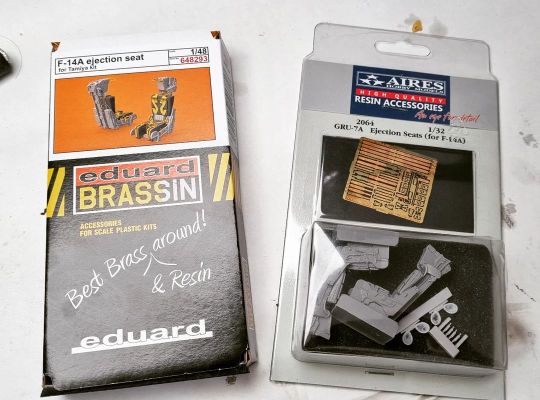
F-14A/B ejection seats for my 1/48 tamiya and 1/32 trumpeter kits just arrived. #scaleaircraft #f14tomcat #modelkit #scalemodel #f14btomcat #f14atomcat #eduard #resin #plasticmodel #scalemodeller #modelarstwo (w: Ely, Cambridgeshire, United Kingdom) https://www.instagram.com/p/ChCJ6lGjgKH/?igshid=NGJjMDIxMWI=
#scaleaircraft#f14tomcat#modelkit#scalemodel#f14btomcat#f14atomcat#eduard#resin#plasticmodel#scalemodeller#modelarstwo
1 note
·
View note
Photo
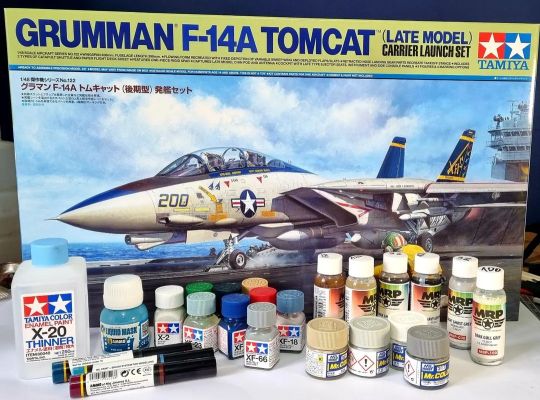
One of my most exciting project for this year. I still need a few bits. Use code scalehangar182 at checkout when shopping super-hobby.co.uk or mojehobby.pl to receive a 5% discount. #scalemodelling #scalemodeller #scalemodel #modelkit #f14 #f14atomcat #navy #navyaircraft #aircraft #scalemodelling #tamiya #48scale #tamiyatomcat #redfoxstudiocockpit #aircraft #cockpit #scalemodelworld #tamiyamodel #scaleaircraft #military #usnavy #f14tomcat #plasticmodel #plastickit #mrppaints (w: Ely, Cambridgeshire, United Kingdom) https://www.instagram.com/p/CaM0CTbt4_M/?utm_medium=tumblr
#scalemodelling#scalemodeller#scalemodel#modelkit#f14#f14atomcat#navy#navyaircraft#aircraft#tamiya#48scale#tamiyatomcat#redfoxstudiocockpit#cockpit#scalemodelworld#tamiyamodel#scaleaircraft#military#usnavy#f14tomcat#plasticmodel#plastickit#mrppaints
4 notes
·
View notes
Photo

One of my next projects... It's going to be a very exciting one. #scalemodelling #scalemodeller #scalemodel #modelkit #f14 #f14atomcat #navy #navyaircraft #aircraft #scalemodelling #tamiya #48scale #tamiya #redfoxstudiocockpit #aircraft #cockpit #scalemodelworld #tamiyamodel #scaleaircraft #military #usnavy #f14tomcat #plasticmodel #plastickit (w: Ely, Cambridgeshire, United Kingdom) https://www.instagram.com/p/CaGAABvucN8/?utm_medium=tumblr
#scalemodelling#scalemodeller#scalemodel#modelkit#f14#f14atomcat#navy#navyaircraft#aircraft#tamiya#48scale#redfoxstudiocockpit#cockpit#scalemodelworld#tamiyamodel#scaleaircraft#military#usnavy#f14tomcat#plasticmodel#plastickit
2 notes
·
View notes
Text
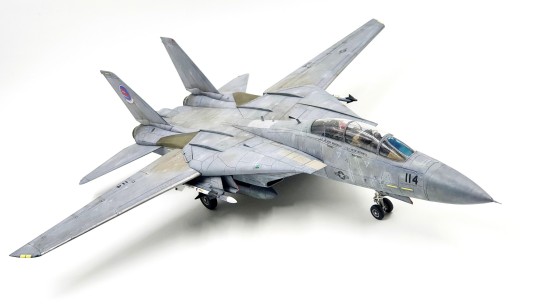

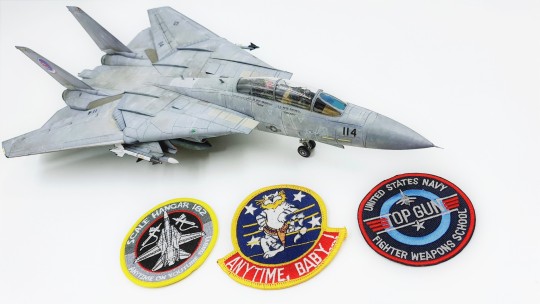
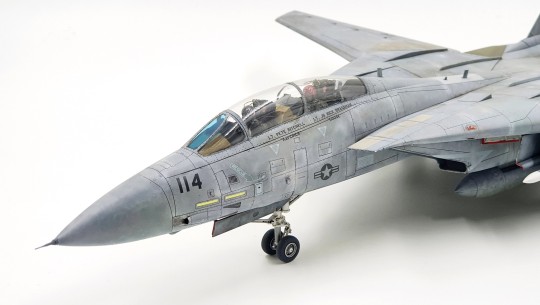




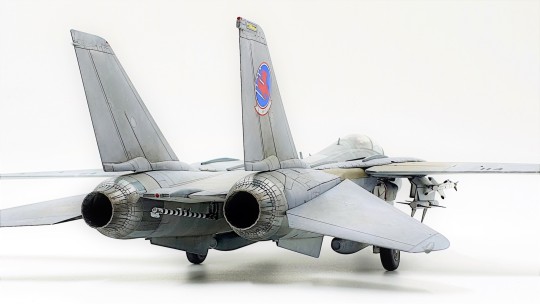
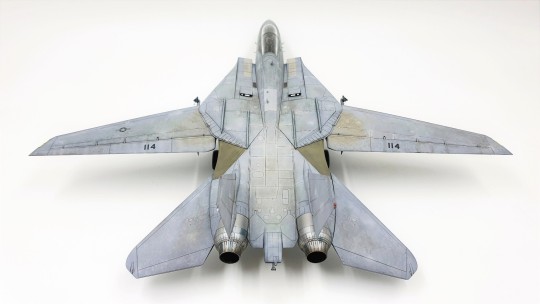
Grumman F-14A Tomcat
"TOP GUN"
Tamiya 1/48
#scale model#model kit#scalemodel#scale models#modelkit#plastic model#scale aircraft#scale modeller#scale modelling#1/48#tamiya tomcat#tamiya model#tamiya#f 14 tomcat model#f 14 tomcat#f 14#f14atomcat#f14a
59 notes
·
View notes
Text


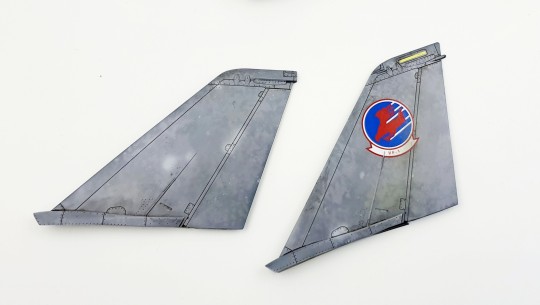




#scale model#model kit#scalemodel#scale models#modelkit#plastic model#scale aircraft#scale modeller#scale modelling#1/48#topgun#top gun#fighter jet#f14a#f14 tomcat#f14tomcat#f14atomcat#tamiya tomcat#tamiya model#tamiya scale model#tamiya#weathering scale model#weathering model#weathering model kit#weathering#miniature modelling#scale miniatures#miniature painting#miniature world#miniatures
20 notes
·
View notes
Text
IRIAF Project “SkyHawk”
Mid-way through the long and bloody war between Iran and Iraq in 1984 the heads of the IRIAF were becoming concerned about the depleting stocks of available operational AIM-54A Phoenix long-range missiles for its F-14A Tomcat fleet (only 224 out of the 714 missiles ordered were delivered before the ‘79 revolution cut ties with the US). To ensure continued effective use of its F-14As the IRIAF Command ordered Col. Mehdiyoun to create a study into a possible alternative to the Phoenix that would be available off-the-shelf as Iran didn’t posses the ability to make its own copy of the lethal but complex Phoenix.
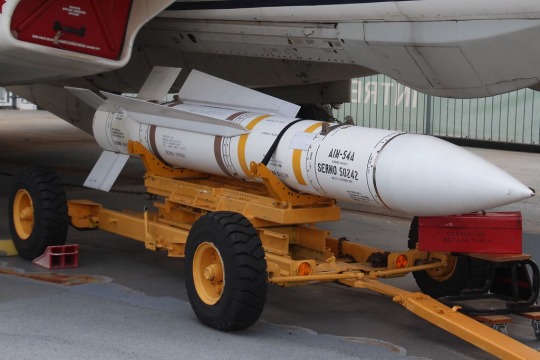
Alternative weapons were studied on the black market (Iran was under arms embargo at this time), and this study became known as “Long Fang” but ended with no alternative weapon either in Iran or elsewhere other than the MiM-23 Hawk surface-to-Air missile which was the standard SAM and was importing additional rounds from Israel, Greece, Taiwan and South Korea until US pressure forced these countries to cease supply of these in 1987.

Technical Officers Col. Delhamed and Maj. Fazilat commenced Project “SkyHawk” in 1985 to begin trials of the MiM-23 Hawk mounted on the F-14A (now called “Sedjil in the air-to-air role) with help from personnel of TFB 8 and a group of former IDF/AF technicians, most notable were Pinkus Schepmsky, Danuta Laszuk and Avrahsm Wein who took part in similar missile projects in Israel called “Distant Thunder” and “Distant Reach” where the Israelis tried adapting the AGM-78 Standard missile to the F-4E Phantom to combat MiG-25s and Tu-22s (these ended after Israel received F-15As equipped with AIM-7Fs). The Israeli team was only in Iran for 87 days and had only limited access to Iran’s F-14As and were not allowed to attend the live fire tests.

This was no simple task. The most obvious problem was the Hawk was far larger than the Phoenix which meant it could only be mounted on the wing glove pylons.

The more substantial problem was that the MiM-23 and the F-14A’s weapon control were not exactly compatible, the Data-link between the Hawk and the Tomcat’s AWG-9 Radar were rather weak. Also the Iranians learned that for the Hawk to stand a chance of a hit the F-14A had to be flying at 10,000ft at a speed of Mach 0.75 whilst the target had to be between 30,000 and 50,000ft. These specific limits would affect the missile’s performance as the likelyhood of all this happening at the same time in combat to create the best conditions for a successful Hawk kill is very slim. Despite all these issues and after many attempts the first Hawk was successfully test-fired from a Tomcat in 1986.

F-14As 3-6060 and 3-6073 were assigned to the “SkyHawk” tests and a number of missiles were fired, one or two were even fired in combat.

However with unsuccessful results and the end of the war led to the IRIAF abandoning Project “SkyHawk”. The AIM-54A would remain in use with the F-14s as the fighter’s main weapon in the conflict and the reduced missile stock problem was solved by other means such as the Iran-contra affair in which Iran recieved a number of upgrade kits which brought a number of non-operational Phoenix missiles back into service and during the 1990s Iran was able to reach a stage in which it was able to manufacture its own more complex parts for its F-14s and AIM-54s which has led to the completely domestic copy known as the “Fakour 90”.

Although despite this some Hawk experiments were continued on a small scale after the war and some hawks have been seen on Iranian tomcats more recently. It’s an interesting project, demonstrating the determination of the Iranians to be self-sufficient on whatever they had at hand, but it’s also an incredible show of skill by the Iranian technicians to have even managed to get the Missile to be mounted and fired from an F-14 at all, even if the results were not satisfactory the complexity of the task can not be understated.
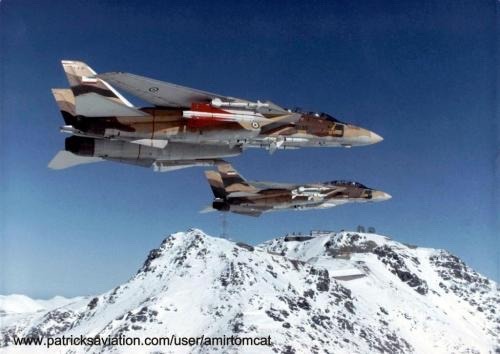

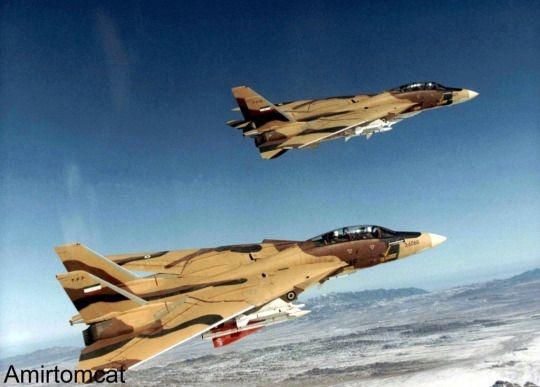
Interestingly these photographs were only released in the late 1990s, roughly a decade after the initial trials took place, the appearance of these photographs led to western publications to believe that the IRIAF had introduced the MiM-23 Hawk as a standard air-to-air missile on its F-14A fleet, obviously not knowing these were actually pictures taken during the “SkyHawk” tests until some time after. also worth noting is that Iran claims to have shot down two aircraft in combat with the F-14-mounted Hawk although this remains unconfirmed.
I will say on a side note I think the Hawk looks really cool on the F-14A, especially as the experimental Hawks were painted with Red fins which gives a distinctive look, also the much bigger size of the missile compared the the Phoenix just goes well with the powerful athetic look of the Tomcat. After building my Tamiya F-14A into 3-6079 im hoping to build a Hasegawa F-14A into 3-6060 in the future which took part in these tests as it’s a uniquely Iranian look.
(Source for this info: Iranian F-14 Tomcat units in combat by Tom Cooper and Fazard Bishop)
#grumman f 14 tomcat#f14#f14a#f14tomcat#f14atomcat#f 14 tomcat#tomcat#iran#islamic republic of iran air force#iriaf#phoenix#hawk#aim 54#mim 23#missiles
41 notes
·
View notes
Text

My level of detail I go for, this is the pilot’s instrument panel for my Tamiya 1/48 F-14A Tomcat fitted with some PhotoEtch parts, really looks good but it’s a fiddly job!
#aircraft model#modelling#model kit#tamiya#f14atomcat#f14tomcat#f14a#photoetch#intrument panel#cockpit
17 notes
·
View notes
Text
AIM-54 Phoenix in Iran
For me one of the most incredible fighter aircraft to be built and put into service was the Grumman F-14 Tomcat

However what made the aircraft one of the most potent fighters was its weapon control system linked with its powerful AN/AWG-9 radar, a system capable of tracking 24 targets and guiding 6 missiles to 6 of these threats almost 100 miles away. To give the Tomcat it’s long claws an incredible weapon was introduced that gave the Tomcat its legendary status: the Hughes AIM-54 Phoenix long-range Air-to-air missile.
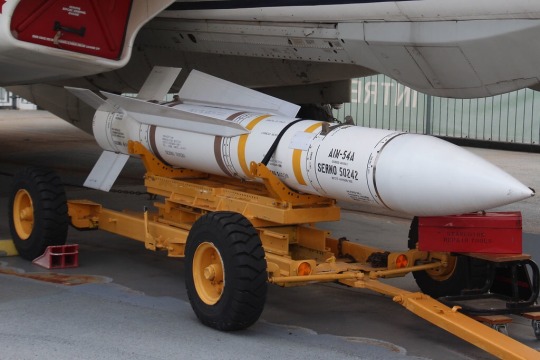
With a range of almost 100 miles, semi-active and active radar features and the ability to home on aircraft attempting to deflect the weapon via ECMs and also proved impossible to jam it was one of the most state of the art aircraft weapons introduced at the time in the 1970s. However due to its size, complexity and need for a powerful radar to fully utilise the weapon it was only used on the F-14, which means only countries who bought the Tomcat could use this missile which came down to two nations: the US and Iran.

With Iran’s decision to acquire the F-14A came contract “Persian King” being signed in 1974. As well as 80 aircraft, training and spare parts and engines for 10 years, the contract also called for a total of 714 operational AIM-54A Phoenix missiles to be built and delivered to Iran. Whilst the Phoenix missiles built for Iran were slightly downgraded electronically to ensure it was less effective against US aircraft and their ECMs the weapon was just as potent as its US counterpart.
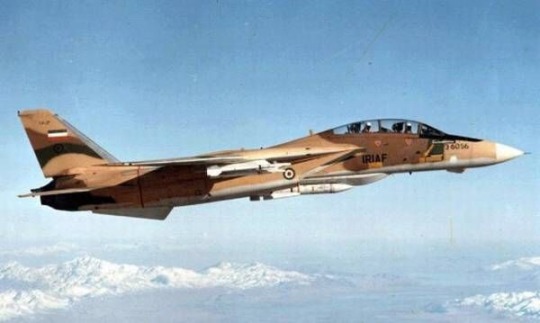
However in 1979 and Islamic Revolution swept through Iran and with it the US Friendly Shah, this along with the Hostage crisis at the US embassy shortly after led to the US turning its back on its former ally and most Shah friendly personnel fleeing the country for fear of torture at the hands of the new Islamic Government.
With the departure of Grumman and US Navy technicians from Iran and rumours that both the F-14As and the AIM-54As had all been sabotaged and made non-operational by the leaving personal it was assumed the Iranian crews now in charge would be unable to fix the aircraft and wepons, the US hoping the highly advanced F-14s would be non-operational in the hands of the new and strongly anti-western Iranian Reigeme as these could now represent a clear threat to others in the Gulf. The imprisonment and even executions of those trained on the aircraft and the weapons seemed to ensure this was the case.

However in July of 1980 tensions and border clashes with Iran’s neighbor Iraq led to commanders of the new IRIAF to begin the process to get a number of F-14s back to operational status. A number of the damaged Phoenix missiles from attempts of Sabotage were also repaired and brought back to operational service.
On the 13th of September 1980 a border intrusion by an Iraqi MiG-23MS led to a historic moment for the Tomcat: The MiG was shot down by a single AIM-54A, the first kill with the mighty Phoenix. With the War with Iraq breaking out on the 22nd September 1980 a large number of imprisoned pilots and ground crew were slowly released from jail and were sent back to their units and by 1981 a rather astonishing 60 Tomcats were now operational, an incredible feat for the now cut-off nation without any outside support.

With more and more engagements came much needed combat experience and lessons were learned by the Iranians on how to use the Tomcat and how to employ the AIM-54A in combat. One of the more noticeable examples was the standard load reduced from the usual 4 Phoenix missiles from the start of the war to just 2.

This was done for a number of reasons. First was because there were only 224 rounds in country after the supply was cut off by the revolution so these rounds had to be used sparingly.
Second was the weight of 4 missiles reduced the Tomcat’s ability to dogfight, therefore the reduction of just 2 AIM-54As under the forward Pallets ensured if an opportunity to use the weapons were missed and the Tomcat was forced into a close in fight it still retained its superior manovering ability as the missiles mouted under the forward fuselage had no effect on the F-14s aerodynamics.
And lastly the Phoenix provided another useful trait for an outnumbered Air Force: Fear. Due to Iraqi pilots being trained to a much lower standard compared to the American-trained Iranian aircrews and their Soviet-made aircraft being fitted with poor RWR equipment led to a number of aircraft being shot down before the formation knew what hit them, which meant all it took was one Iraqi aircraft to be shot down to turn an entire mission formation around and abandon mission. Iraqi pilots often ran when the presence of an F-14 was known, as well as known hunting grounds were avoided at all costs by both Iraqi and Saudi pilots knowing the terrifying capabilities of the Tomcat and the Phoenix.
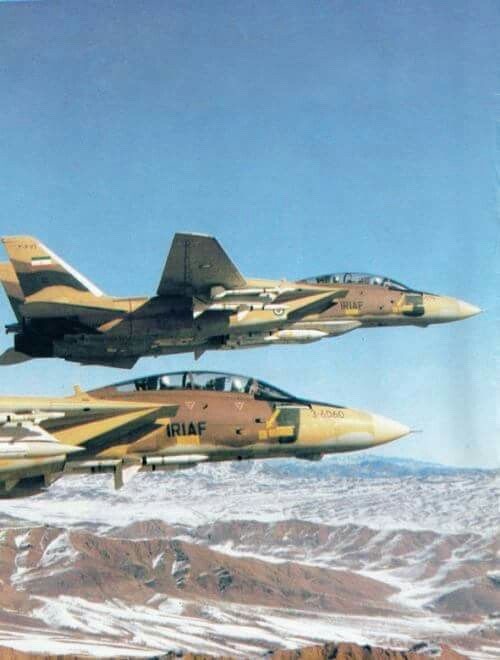
With the advantages of the F-14 clear over anything the IrAF had in its inventory the Tomcat crews used the aircraft and the Phoenix to its full advantage, often using utilising the Phoenix at long range and the big warhead proved deadly, sometimes downing more than one aircraft with the detonation, such as in December of 1980 when a single AIM-54 downed 2 MiG-23s and in January the following year a Phoenix downed 3 MiG-23s, with the 4th aircraft damaged, proving that 2 missiles were plenty for a typical mission as the fear of more attacks would drive most formations home.
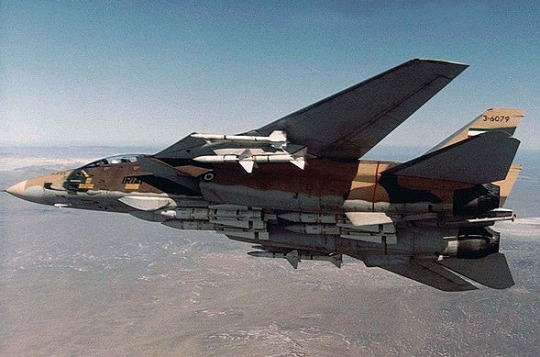
However by 1985 the stocks of operational AIM-54As were starting to be depleted. A combination of 5 years of hard war and the Phoenix missile’s components going past their shelf life as missiles need update kits to keep them in operational condition, especially a complex weapon like the Phoenix which has many sensitive and sophisticated parts to work and many of these became inoperable. This led to a experimental series of tests called “project SkyHawk” to see if the MiM-23 Surface-to-Air missile could work as a aircraft weapon, these tests proved ineffective and the stock of Phoenix missiles were boosted by other means like the Iran-contra affair in which a number of upgrade kits were provided to Iran by the US and a fair number of missiles were brought back to frontline status.
The Phoenix proved to be an incredibly effective weapon against every aircraft in the Iraqi Air Force, even against the most advanced aircraft like the Mirage F.1, MiG-25 and the Tupolev Tu-22B which possessed good RWRs and ECMs. By the end of the war in mid-1988 the Phoenix missile had been responsible for the 40 out of the estimated 160 aircraft shot down during the war, the missile proving incredibly effective and contributed to why in my opinion the F-14 was by far the most effective aircraft in the Iran-Iraq war. Despite depleting numbers of both Tomcats and it’s AIM-54s they still proved superior in the engagements it took part in.
Interesting how Iran showed the effectiveness of the AIM-54 in combat unlike the US who introduced the weapon as the US Navy have only had limited opportunities to use the weapon such as the Gulf war of 1991 where in a number of possible uses of the Phoenix the weapon didn’t work or the permission to fire was not granted due to fears of friendly fire. Only one kill was almost scored in 1999 by a US Phoenix in Iraq but the missile just missed by a few feet.
Today the original AIM-54 May still be in service with the IRIAF although it’s been very rarely seen on the 20-50 Tomcats estimated to be in service. With advancements in the aircraft Industry the Iranians have began a effort to arm its F-14s with modern domestic versions of the old US-made weapons originally supplied back in the 70s, most notably is the Fakour-90, a copy of the Phoenix which will be the new Long-range armament of the Tomcat in the coming years, coupled with the upgraded F-14A-M this could provide a suitable fighter/Interceptor for years to come although given this is Iran we are talking about it could be a poor attempt at modernisation and these could just be false.
But whatever the case the Iranian use of the AIM-54 during the Iran-Iraq proved beyond doubt the huge and complex AIM-54 combined with the AN/AWG-9 was an astonishing weapon system.
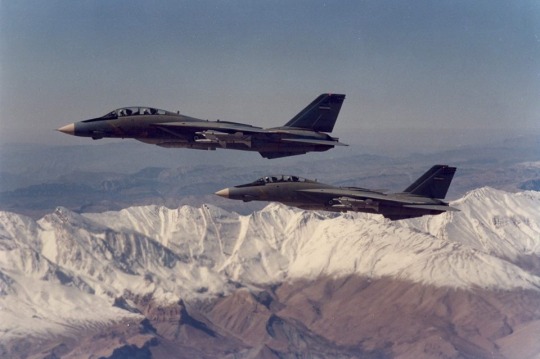
#grumman f 14 tomcat#f14atomcat#f14tomcat#f14#f14a#Tomcat#iriaf#islamic republic of iran air force#iran#iranian airspace#aim 54#phoenix#aim 54 phoenix#military aviation#fighter jet
8 notes
·
View notes